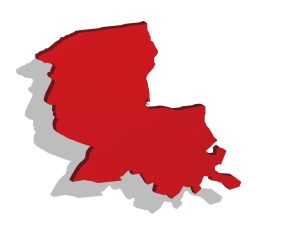Governor Edward’s proposed cuts to school vouchers could benefit low-income students
May 11, 2016
This is an opinion article and does not necessarily reflect the views of The Tulane Hullabaloo.
Topping the list of criticisms of Governor John Bel Edwards is his plan to cut funding to the school voucher program in place across Louisiana. These vouchers give low-income students access to “high-quality”, participating private schools. The voucher program, however, does not directly benefit low-income students who receive the vouchers.
The situation itself appears grim.
The state government has been struggling with a budget deep in the red and funding for higher education has already seen cuts. Edwards’ first steps into office were lined with issues present in Louisiana before he even considered running for governor.
Highlighting the voucher program itself, one of the more recent proposals brought forward by Edwards suggest cuts of $6 million to the statewide voucher program. These cuts would remove 1,000 children of low-income families from the program, returning them to the public school system.
At first glance, this seems like a terrible idea. Nationally, Louisiana ranks very poorly for education at various levels. By WalletHub’s metrics, Louisiana’s public schools rank 43rd in school system quality and 44th in safety.
This points to a dire need for education reform in a state where, according to the National Assessment of Educational Progress, by eighth grade, 21 percent of students score at or above proficient in mathematics. This is a full 13 percent below the national average. Unfortunately, the school voucher program is not the answer.
Studies have found that voucher programs produce average or below average results, with student proficiency staying the same or declining. A team of economists from several universities, including Duke University and the Massachusetts Institute of Technology, found in a study that the test scores for voucher students in Louisiana dropped in their first year as compared to their peers who did not receive the voucher.
This study was a random trial selecting low-income students from low-performing Louisiana public schools. The “lottery” was modeled after a similar study for charter schools in Boston, which saw more success.
It is evident that the model is as unbiased as possible, and various theories have been provided to explain these results. A sudden transition to a new school with a new environment could have negative effects.
Alternatively, the participating private schools may be experiencing poor performance on a larger scale, prior to their entrance into the program. All issues aside, there are better, alternative policies to address Louisiana’s poor academic standing.
The state government would do better to look at housing voucher alternatives, placing families living in poverty in areas with better access to education and community programs.
School vouchers have plenty of appeal. Intuitively, it makes sense to blame a lack of choice for poor student success in New Orleans and throughout the state. A different environment or administrative style, however, is not a solution. Focusing on the roots of the problem, the public education system itself, should be the goal.
A small, pilot-project in Tacoma, Washington provided housing vouchers in the form of rent payment, with certain requirements. The families receiving the vouchers had to keep their children at McCarver Elementary, a school with the highest incidents of parent homelessness and student turnover in the region. The parents were also required to engage actively in their children’s education and meet regularly with staff case managers.
The McCarver program saw success — a rapidly declining turnover rate, higher reading scores and a higher average income among the families by almost double. This was a small project, at one school in one school district. But Louisiana — and New Orleans in particular — experiences its own issues of child poverty.
In 2014, 43.8 percent of New Orleans children were living below the poverty threshold, 22.1 percent higher than the national average. A school district-based program modeled after the McCarver program could pull from the sense of community within the city to improve student achievement.
In this situation, Governor Edwards is making the right move. His back-pedaling from school choice advocates and watchdog groups could use a little more practice, but his initial proposal is sound.
Kathryne is a senior at Newcomb-Tulane College. She can be reached at [email protected].









Leave a Comment